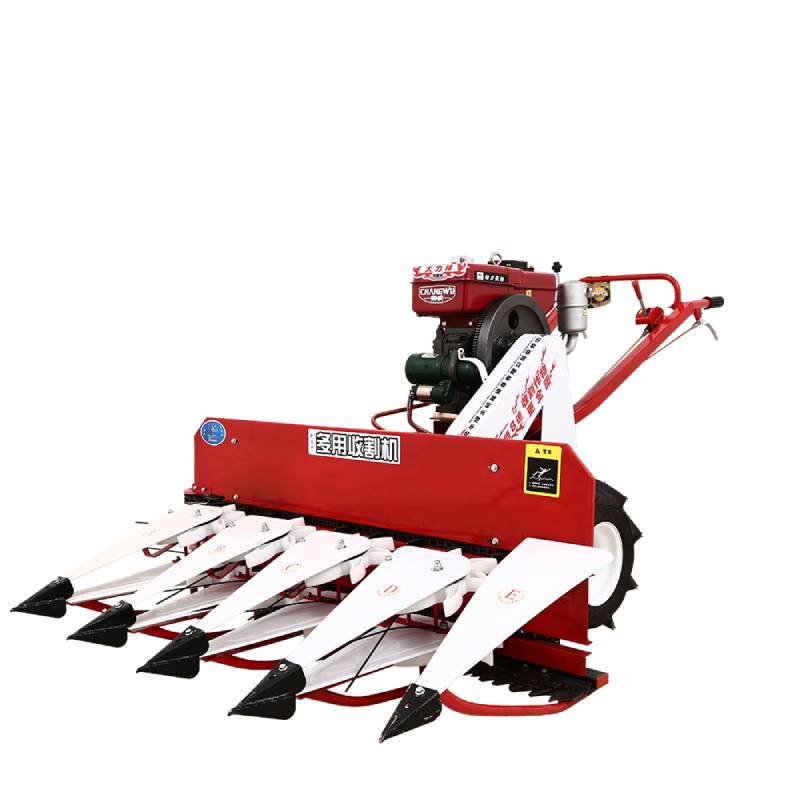Reaper Binder for Rice & Wheat - Fast, Durable, Compact
Field Notes from the Harvest: Why the Reaper Binder is Having a Moment
Walk any small-grain belt at harvest and you’ll hear the same story: labor is tight, weather windows are short, and lodged crops are a headache. That’s exactly where the Hercules reaper (origin: Julu Industrial Park, Xingtai City, Hebei Province, China) has been turning heads. To be honest, the category has matured fast—compact machines now marry simple mechanics with real-world stamina. And, yes, farmers love gear that just works.

Industry pulse
Three converging trends: mini-mechanization in Asia and Africa, climate-pressed harvesting windows, and a shift to lighter, serviceable machines over bulky combines on tiny plots. Many customers say a compact machine that cuts, gathers, and ties in one pass is simply more practical than hiring a combine for half-acre rice. I guess that’s not surprising.
Representative specs (Hercules GD120C2)
| Parameter | Typical Value | Notes |
|---|---|---|
| Cutting width | ≈ 120 cm | GD120C2 class; real-world use may vary |
| Rows | 1–2 (adjustable) | Rice, wheat, barley, oats |
| Engine power | ≈ 8–12.5 hp | Petrol or small diesel options |
| Field capacity | ≈ 0.2–0.6 ha/h | Plot size, crop density, operator skill |
| Binding system | Twine knotter | Jute or synthetic twine |
| Weight | ≈ 120–180 kg | Transport-friendly |
How it’s built and tested
- Materials: high‑carbon steel blades, Mn-steel guards, sealed bearings, powder‑coated frame, galvanized fasteners, HDPE chain covers.
- Processes: laser cutting, CNC forming, shot blasting, heat treatment on knives, e‑coat + powder topcoat for corrosion resistance.
- Testing: safety checks aligned with ISO 4254 series; bench vibration and endurance runs; salt‑spray exposure styled on ASTM B117; field validation in paddy and wheat with moisture 12–22%.
- Service life: around 6–8 seasons with routine knife sharpening at 25–40 hours and twine path cleaning daily.
Where a Reaper Binder shines
Small plots, terraced hills, soft paddy soils, and lodged crops. Contractors like the low operating cost; cooperatives like the predictable bundle output for sun-drying. In fact, operators report fuel use ≈ 0.9–1.2 L/h and header losses ≈ 1.5–3% in upright wheat (3–5% in lodged rice)—typical demo-day numbers, to be fair.
Vendor snapshot: Hercules vs market peers
| Vendor | Strengths | Considerations | Warranty |
|---|---|---|---|
| Hercules (Hebei, China) | Robust frame, easy parts support, value pricing | Specs vary by market; confirm engine option | ≈ 12 months (standard) |
| Brand A (imported) | Refined controls, low vibration | Higher price; twine parts proprietary | 6–12 months |
| Brand B (local) | Fast delivery, localized service | Fit-and-finish varies between batches | ≈ 6 months |
Customization and field stories
- Options: cutting width packages, lugged tires or steel cage wheels for wet paddy, handlebar height kits, jute vs. synthetic twine, rust‑guard coatings.
- Case in point: a co‑op outside Xingtai switched to Reaper Binder bundles to standardize sun-drying; breakage claims dropped noticeably, and turnaround between plots improved.
- Maintenance wins: daily twine path cleaning, weekly chain tensioning, and seasonal knife set replacement keep uptime high.
Certifications and compliance
Factories supplying Hercules units operate under ISO 9001 QMS; machines are built with CE-marking in mind for applicable markets and safety principles aligned to ISO 4254. Dealers often provide local conformity paperwork on request—worth asking before you wire funds.
Bottom line: If you’re juggling small plots or problem crops, a compact Reaper Binder like the Hercules GD120C2 class is a practical, budget-sane step up from manual harvest without leaping to a full combine.
- ISO 4254 series — Safety of agricultural machinery, General principles. https://www.iso.org/standard/60857.html
- FAO — Testing and evaluation of agricultural machinery (Guidelines and resources). https://www.fao.org/agriculture/mechanization
- EU Machinery Directive (2006/42/EC) — CE compliance framework. https://eur-lex.europa.eu/legal-content/EN/TXT/?uri=celex:32006L0042
Latest news
-
Hand Held Rice Harvester: Efficient, Portable Solutions for Modern FarmingNewsNov.20,2025
-
Combined Mini Harvester – Small Scale Agricultural Revolution & EfficiencyNewsNov.20,2025
-
Combine Mini Harvester: Efficient, Affordable Harvesting Solutions for Small FarmsNewsNov.19,2025
-
Combine Harvester Small Size - Efficient & Sustainable Farming SolutionsNewsNov.19,2025
-
Efficient and Compact Combine Harvester Small for Modern Farming NeedsNewsNov.18,2025
-
Mini Wheat Harvester - Compact & Efficient Farming Solutions for SmallholdersNewsNov.18,2025








